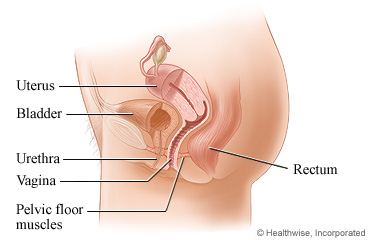Urethral Sling Surgery: What to Expect at Home
Your Recovery

Urethral sling surgery is done to treat stress urinary incontinence
in women. The sling supports the urethra, which is the tube that
carries urine from the bladder to outside the body. After surgery,
you may feel weak and tired for several days. Your pubic bone may
feel bruised, and you may have some pain or cramping in your lower
belly. These symptoms should get better in 1 to 2 weeks. You also
may have some vaginal spotting for up to 1 month. This is normal.
You should have less or no urine leakage when you sneeze, cough,
laugh, or exercise. In fact, at first you may find that it is harder
than usual to empty your bladder. This usually gets better after 1
or 2 weeks.
You will probably be able to go back to work in 1 to 2 weeks. But
you will need at least 6 weeks to fully recover before returning to
all normal activities. You must avoid heavy lifting and strenuous
activities during this time. These might put extra pressure on your
bladder while you recover.
This care sheet gives you a general idea about how long it will take
for you to recover. But each person recovers at a different pace.
Follow the steps below to get better as quickly as possible.
How can you care for yourself at home?

Activity
|
|
|
|
|
|
|
|
-
Avoid strenuous activities, such as jogging or weight
lifting, and straddling activities, such as bicycle or
horseback riding, for 6 weeks. Or wait until your doctor
says it is okay.
|
|
|
-
For 6 weeks or until your doctor says it is okay, avoid
lifting anything that would make you strain. This may
include heavy grocery bags and milk containers, a heavy
briefcase or backpack, cat litter or dog food bags, a
vacuum cleaner, or a child.
|
|
|
|
|
|
|
|
|
|
|
|
|

Diet
|
|
-
You can eat your normal diet. If your stomach is upset,
try bland, low-fat foods like plain rice, broiled chicken,
toast, and yogurt.
|
|
|
|
|
|
-
You may notice that your bowel movements are not regular
right after your surgery. This is common. Try to avoid
constipation and straining with bowel movements. You may
want to take a fiber supplement every day. If you have not
had a bowel movement after a couple of days, ask your
doctor about taking a mild laxative.
|

Medicines

Incision
care
|
|
|
|
|
-
Do not wash the area directly, but allow warm, soapy water
to run over the incision daily. Then pat it dry. Don't use
hydrogen peroxide or alcohol, which can slow healing. You
may cover the area with a gauze bandage if it weeps or
rubs against clothing. Change the bandage every day.
|
|
|
|

Exercise
|
|
|
|
|
-
To do Kegel exercises:
-
Squeeze your muscles as if you were trying not to pass
gas. Or squeeze your muscles as if you were stopping
the flow of urine. Your belly, legs, and buttocks
shouldn't move.
-
Hold the squeeze for 3 seconds, then relax for 5 to 10
seconds.
-
Start with 3 seconds, then add 1 second each week
until you are able to squeeze for 10 seconds.
-
Repeat the exercise 10 times a session. Do 3 to 8
sessions a day.
|
|
|
|
|
|
-
If doing these exercises causes pain, stop doing them and
talk with your doctor. Sometimes people have pelvic floor
muscles that are too tight. In these cases, doing Kegel
exercises may cause more problems.
|
|
|
|
Follow-up care is a key part of your treatment and safety. Be
sure to make and go to all appointments, and call your doctor if you
are having problems. It's also a good idea to know your test results
and keep a list of the medicines you take.
When should you call for help?
 Call 911 anytime you think you may need emergency care.
For example, call if:
Call 911 anytime you think you may need emergency care.
For example, call if:
Call your doctor now or seek immediate medical care if:
Watch closely for changes in your health, and be sure to contact
your doctor if you have any problems.
Current as of: November 15, 2023
Content Version: 14.0
Care instructions adapted under license by your healthcare professional. If you have questions about a medical condition or this instruction, always ask your healthcare professional. Healthwise, Incorporated disclaims any warranty or liability for your use of this information.